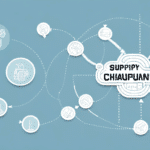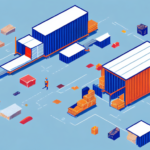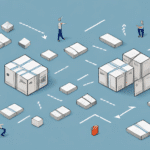Top 10 Reverse Logistics Companies to Consider for Your Business
Reverse logistics, also known as return logistics or after-sales logistics, involves the process of managing the return of products from consumers to manufacturers or retailers. With the surge in e-commerce and the growing emphasis on sustainable business practices, reverse logistics has become a critical component of modern supply chains. However, managing reverse logistics can be a complex and resource-intensive task for businesses, prompting many to outsource this function to specialized service providers. In this article, we explore the top 10 reverse logistics companies that can enhance your business operations.
Understanding Reverse Logistics and Its Business Importance
Reverse logistics encompasses the planning, execution, and control of efficient and cost-effective flows of raw materials, in-process inventory, finished goods, and related information from the point of consumption back to the point of origin. This process aims to recapture value or ensure proper disposal of returned products.
Implementing effective reverse logistics strategies offers several benefits:
- Environmental Sustainability: Reduces waste and minimizes the environmental footprint by recycling or refurbishing returned products.
- Customer Satisfaction: Enhances customer loyalty by providing seamless return experiences.
- Cost Recovery: Maximizes the value recovered from returned items through repackaging, repairing, or reselling.
- Operational Insights: Identifies return patterns to improve product design and reduce future returns.
According to a Forbes report, businesses with optimized reverse logistics can reduce operational costs by up to 30% while simultaneously enhancing customer satisfaction.
Choosing the Right Reverse Logistics Provider: Key Considerations
Selecting an appropriate reverse logistics partner is pivotal for the success of your operations. Consider the following factors:
- Industry Experience: Proven expertise in handling products similar to yours.
- Service Capabilities: Ability to manage specific return processes, such as refurbishment or recycling.
- Technology Integration: Advanced tracking and reporting systems for real-time visibility.
- Cost Transparency: Clear and competitive pricing models without hidden fees.
- Sustainability Practices: Commitment to eco-friendly processes and certifications.
- Customer Support: Responsive and dedicated support teams to address issues promptly.
- Geographical Reach: Ability to operate in regions where your business has a presence.
Effective customer service and robust technological infrastructure are essential to handle returns efficiently and maintain seamless communication throughout the process.
Technological Innovations in Reverse Logistics
Technology plays a transformative role in enhancing reverse logistics operations. Key technological advancements include:
- Tracking Systems: Utilizing RFID, barcodes, and GPS for precise product tracking throughout the return process.
- Data Analytics: Leveraging data to identify return trends, optimize processes, and predict future returns.
- Automation and Robotics: Streamlining operations through automated sorting, testing, and refurbishment of returned items.
- Blockchain Technology: Ensuring transparency and security in tracking product movements and authenticating returns.
According to a report by McKinsey & Company, the integration of advanced technologies in reverse logistics can improve process efficiency by up to 25%.
Case Studies: Success Stories in Reverse Logistics
Examining how leading companies implement reverse logistics can provide valuable insights:
Apple
Apple's refurbishment program efficiently recycles returned products, reducing electronic waste and recovering valuable materials. This initiative not only minimizes environmental impact but also generates additional revenue streams.
Dell
Dell's comprehensive recycling program for electronic products highlights the company's commitment to sustainability. By repurposing returned items, Dell reduces waste and promotes a circular economy.
Walmart
Walmart's reverse logistics program streamlines the return process for its suppliers, decreasing return handling costs and improving supply chain efficiency.
These case studies demonstrate the tangible benefits of effective reverse logistics, including cost reduction, enhanced sustainability, and improved customer satisfaction.
Best Practices for Effective Reverse Logistics Management
Implementing best practices ensures that reverse logistics operations are efficient and yield maximum benefits:
- Clear Returns Policy: Establish a transparent and comprehensive returns policy to manage customer expectations.
- Reliable Service Provider: Partner with experienced reverse logistics providers that align with your business needs.
- Advanced Technology: Invest in tracking and reporting systems to monitor returns in real-time.
- Dedicated Team: Form a specialized team to handle reverse logistics operations, ensuring focus and efficiency.
- Inventory Management: Maintain accurate inventory records of returned products to minimize handling time and costs.
- Continuous Improvement: Regularly assess and refine reverse logistics processes based on performance metrics and feedback.
Adhering to these best practices can significantly enhance the efficiency and effectiveness of your reverse logistics operations, leading to cost savings and increased customer loyalty.
Measuring Reverse Logistics Success: Key Performance Indicators
Evaluating the success of your reverse logistics program requires tracking specific Key Performance Indicators (KPIs). Important KPIs include:
- Cost per Return: Average cost associated with processing each return.
- Return Turnaround Time: Time taken to process and resolve returns.
- Recovery Rate: Percentage of returned products that are refurbished, resold, or recycled.
- Customer Satisfaction: Customer feedback and satisfaction scores related to the return process.
- Waste Reduction: Amount of waste minimized through effective reverse logistics practices.
Monitoring these KPIs provides insights into the efficiency of your reverse logistics operations and highlights areas for improvement. For instance, a Supply Chain Digital article emphasizes that optimizing these KPIs can lead to a more sustainable and profitable supply chain.
Future Trends and Predictions in Reverse Logistics
The reverse logistics landscape is evolving with several emerging trends:
- Automation and Robotics: Increased use of automated systems to handle returns, reducing manual labor and increasing speed.
- Circular Economy Models: Emphasis on designing products for longevity, reuse, and recycling to create sustainable business models.
- Blockchain Integration: Enhancing transparency and security in the return process through decentralized ledger technologies.
- Artificial Intelligence: Utilizing AI for predictive analytics to forecast returns and optimize reverse logistics strategies.
- Sustainability Focus: Growing importance of eco-friendly practices in managing returns and reducing environmental impact.
Staying abreast of these trends enables businesses to innovate and maintain competitive advantage in their reverse logistics operations.
Integrating Reverse Logistics into Your Supply Chain Strategy
Seamlessly incorporating reverse logistics into your overall supply chain strategy can drive significant business benefits. Consider the following tips:
- Policy Design: Develop a clear and comprehensive reverse logistics policy aligned with your business objectives.
- Provider Selection: Choose reverse logistics partners that complement your supply chain and offer scalable solutions.
- Technology Integration: Implement integrated tracking and reporting systems to ensure cohesion between forward and reverse logistics.
- Goal Alignment: Align reverse logistics objectives with broader business goals to ensure cohesive strategy execution.
- Continuous Monitoring: Regularly assess reverse logistics performance and make data-driven improvements.
By following these strategies, businesses can enhance their supply chain resilience, reduce costs, and improve overall operational efficiency.
In conclusion, reverse logistics is an indispensable aspect of modern supply chain management. By selecting the right service providers, leveraging advanced technologies, and adhering to best practices, businesses can effectively manage returns, minimize waste, and enhance customer satisfaction. Utilize the insights and strategies outlined in this article to optimize your reverse logistics operations and achieve sustained business growth.






















